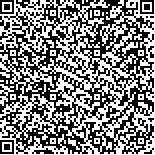| 摘要: |
| [摘要] 目的 探讨应用达芬奇机器人行三孔式剑突下入路胸腺扩大切除术在重症肌无力外科治疗中的应用价值。方法 纳入江西省人民医院胸外科于2021年6月至2023年3月期间使用达芬奇Xi手术机器人系统行胸腺扩大切除术的重症肌无力患者23例,所有患者使用机器人剑突下三孔法完成手术。统计手术时间、术中出血量、术后住院时间、术后2个月重症肌无力定量评分量表(QMGS)评分等指标并进行分析。结果 所有患者顺利完成手术,无中转开胸、围术期死亡病例。手术时间130~370(228.46±81.02)min,术中出血量20~250(92.30±87.86)ml,术后入住胸外科重症监护病房(ICU)时间1~18(3.54±4.58)d,术后气管插管呼吸机辅助通气时间1~8(1.77±2.17)d,术后24 h胸腔引流量70~380(179.62±101.31)ml,术后胸管留置时间2~12(4.62±2.90)d,术后住院时间4~32(10.38±7.88)d,切除的肿物标本体积126.0~538.2(275.22±140.29)cm3,淋巴结清扫数目1~26(5.62±7.72)个,均为肿瘤学阴性淋巴结。术后2个月,QMGS评分(4.46±4.31)分,QMGS相对评分(0.59±0.24)分,胸部CT均未见明显异常。除1例术后发生肌无力危象外,无其他并发症发生。结论 传统胸腔镜三孔式剑突下入路的手术技术改良后应用于达芬奇机器人行胸腺扩大切除术,可实现全胸腺切除、纵隔脂肪组织廓清,手术安全可靠,治疗重症肌无力疗效确切。 |
| 关键词: 达芬奇机器人 三孔式剑突下入路 胸腺扩大切除术 重症肌无力 |
| DOI:10.3969/j.issn.1674-3806.2023.06.03 |
| 分类号:R 746.1 |
| 基金项目: |
|
| Application value of robotic-assisted extended thymectomy in patients with myasthenia gravis |
|
XI Jin-feng, XU Quan
|
|
Nanchang University Jiangxi Medical College, Jiangxi 330000, China; Department of Thoracic Surgery, Jiangxi Provincial People′s Hospital(the First Affiliated Hospital of Nanchang Medical College), Nanchang 330006, China
|
| Abstract: |
| [Abstract] Objective To explore the application value of Da Vinci robot to perform the extended thymectomy for the treatment of myasthenia gravis through the three-port subxiphoid approach. Methods From June 2021 to March 2023, 23 patients with myasthenia gravis who received Da Vinci Xi robot to perform the extended thymectomy for the treatment of myasthenia gravis through the three-port subxiphoid approach in the Department of Thoracic Surgery of Jiangxi Provincial People′s Hospital were included in this study. The indicators such as surgical time, intraoperative blood loss, postoperative hospitalization time, and the Quantitative Myasthenia Gravis Scale(QMGS) score 2 months after surgery were statistically analyzed. Results The operations of all the patients were successfully completed, and there was no conversion to thoracotomy and no perioperative death. The surgical time was 130-370(228.46±81.02)minutes. The intraoperative bleeding volume was 20-250(92.30±87.86)ml. The time of admission to the thoracic intensive care unit(ICU) after surgery was 1-18(3.54±4.58)days. The postoperative tracheal intubation ventilator assisted ventilation time was 1-8(1.77±2.17)days. The postoperative 24-hour thoracic drainage was 70-380(179.62±101.31)ml. The postoperative thoracic tube cannulation time was 2-12(4.62±2.90)days. The postoperative hospitalization time was 4-32(10.38±7.88)days. The volume of resected tumor specimens was 126.0-538.2(275.22±140.29)cm3 and the number of dissected lymph nodes was 1-26(5.62±7.72). All the dissected lymph nodes were oncology-negative. The QMGS scores were (4.46±4.31)points 2 months after surgery, and the relative scores of QMGS were (0.59±0.24)points 2 months after surgery. No significant abnormalities were found on the chest computed tomography(CT) 2 months after surgery. No other complications occurred except for one case of postoperative myasthenic crisis. Conclusion The traditional thoracoscopic three-port subxiphoid approach has been modified and applied to Da Vinci robot for extended thymectomy, which can achieve complete thymectomy and clearance of mediastinal adipose tissues, making the operation safe and reliable, and the therapeutic effects of myasthenia gravis are definite. |
| Key words: Da Vinci robot Three-port subxiphoid approach Extended thymectomy Myasthenia gravis |

